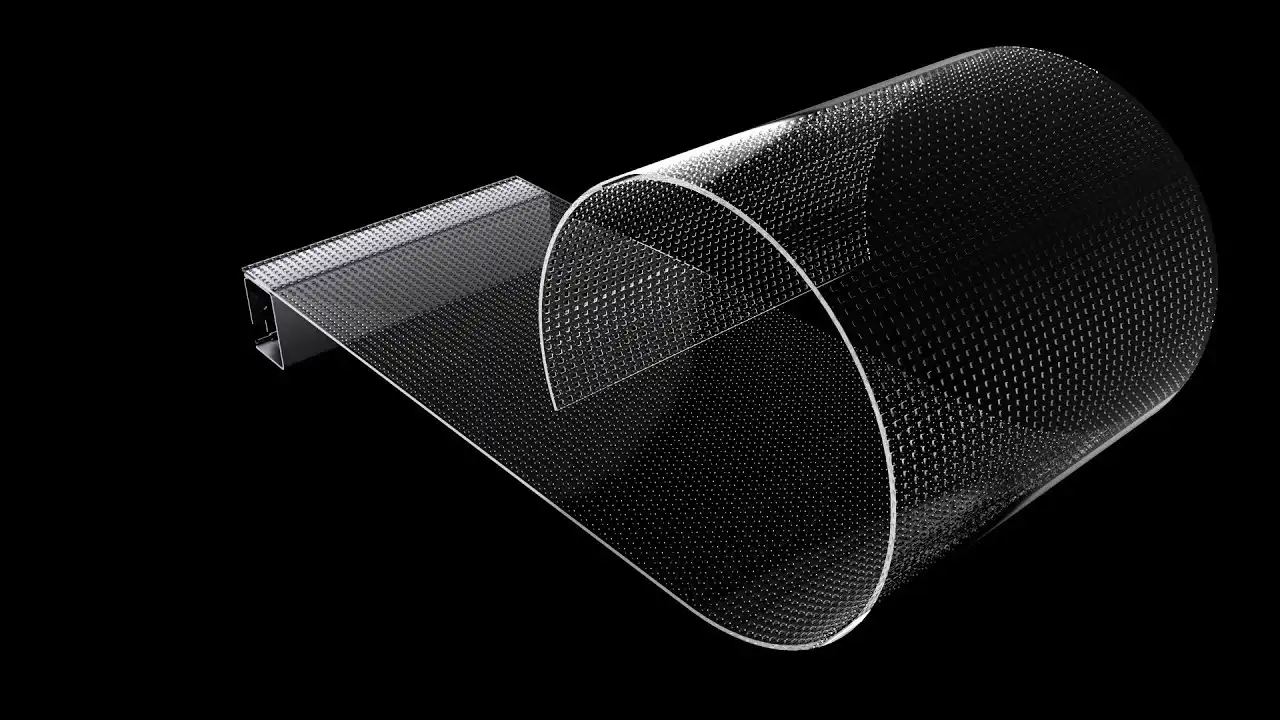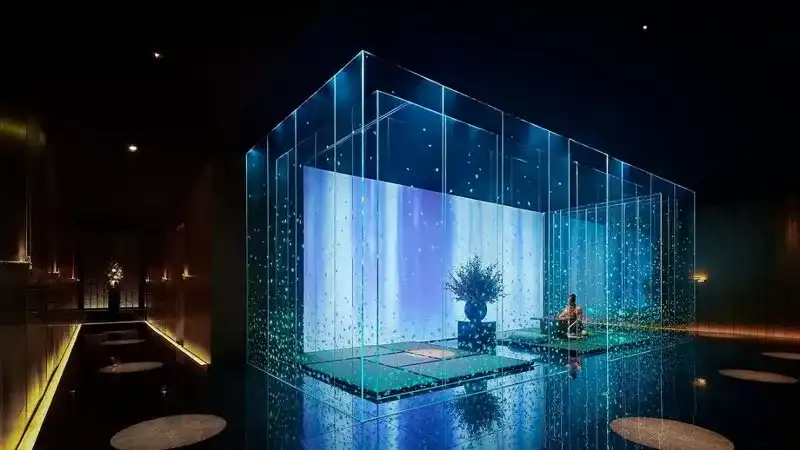How Do Transparent LED Screens Work?
Transparent LED screens are changing the way technology is used in building design and business environments. Unlike standard LED displays, these screens present high-brightness, full-color images without blocking the view behind them.
Cinstar LED offers an advanced transparent LED film screen collection that combines performance, flexibility, and aesthetic appeal. In this blog, we will explore how these screens work, the core technology behind them, and the meticulous manufacturing process that ensures every Cinstar product meets the highest standards of quality and clarity.

Working Principle of Transparent LED Film Screens
Transparent LED film screens harmonize digital graphics with physical transparency. By entrenching ultra-thin LED features within flexible, Crystal-clear substrates, they deliver bright content without sacrificing natural light or indoor visibility.
What Is a Transparent LED Film Screen
A transparent LED film screen is a thin, flexible layer embedded with micro-scale LEDs, typically supported by a PET (polyethylene terephthalate) or similar translucent substrate. When installed, the screen appears nearly invisible until content illuminates the film. This high-transparency design (often 70–90% clarity) makes it ideal for storefronts, museum exhibits, corporate lobbies, and architectural façades.

The Core Technology Behind Transparent LED Screens
Transparent LED screens rely on a combination of LED lighting, transparent materials, and smart design engineering. Each screen is built from tiny LEDs that act as individual light sources.
LED Modules
The tiny LED modules, arranged using SMD (Surface-Mounted Device) technology, where LEDs are mounted on a transparent board via direct-view LED placement. By adjusting the brightness of red, green, and blue LEDs, the screen can produce a full spectrum of colors, forming images and videos.
Transparent Panels
Instead of being mounted on a solid background like traditional displays, the LEDs are placed on a transparent glass or acrylic panel. This structure ensures that light can pass through, making the screen appear see-through when not actively displaying content.
Edge-lighting versions use LEDs that run along the borders of the panel. It interleaves light into the substrate to ensure uniform brightness. The gap in between provides transparency off-screen and the best visual effect on-screen.
Structural Layers and Design Elements
A typical transparent LED film includes:
- A transparent substrate (glass or PET) is the clear base.
- LED matrix or grid of single-color or RGB individual-lit chips.
- Driver ICs within the control circuit that precisely modulate each LED's brightness and color for silky smooth visuals.
- Optional heat dissipation techniques are particularly important for outdoor or high-brightness use.

Balancing Transparency, Resolution, and Brightness
When designing transparent LED films for video walls, a careful balance is required:
- Pixel pitch and transparency: Close pixel spacing maximizes resolution while minimizing transparency.
- Brightness levels: Such films go up to 5,000 to 10,000 nits, providing rich visuals even under outdoor and direct sunlight conditions.
- Wide viewing angles: Viewers can see clear, high-quality images up to 160°.
Read in detail: Why Transparent LED Screens Are the Future of Digital Signage
How Do They Appear Transparent?
The transparency effect comes from the spacing between LEDs and the transparent substrate. Since the screen is not a solid panel, the human eye perceives the gaps as see-through space, allowing viewers to see both the digital content and the background behind it.
Manufacturing Process of Transparent LED Screens
Strict craftsmanship standards are needed to manufacture each transparent LED screen with clarity, performance, and durability:
- Material preparation -- High-clarity substrates (such as PET or tempered glass) are precision-cut and cleaned.
- LED assembly -- Micro-LEDs are meticulously mounted using SMT onto the substrate, following precise layout planning.
- Coating application -- Anti-reflective or anti-glare layers are applied to reduce surface glare.
- Electronics integration -- The control circuit or driver IC is soldered or affixed to the transparent panel.
- Module encapsulation -- The assembly is sealed with protective layers for longevity.
- Quality testing -- Individual panels are checked for brightness, color gamut, optical transparency, and view angles.
- Packaging and deployment -- Modules are converted to scalable, modular panels, easily ready for quick installation.
These steps ensure that every screen meets industry standards, delivering both transparency and visual quality.
Benefits of Transparent LED Displays
Transparent LED film screens are unique in the following respects:
- Low visual intrusion: Preserve sightlines when presenting vivid content.
- Power efficiency & lifespan: 250–300 W/m² power use and 100,000+ operating hours lifespan for the majority of models.
- Swift brightness adjustment: With a reaction time under 0.5 seconds, the screen remains readable under changing light conditions.
Real-World Applications
- Retail storefronts where visibility and branding co-exist.
- Corporate lobbies and architectural installations blend aesthetics with information.
- Museums, galleries, and exhibitions preserve the exhibit view behind dynamic content.
- Premium showrooms and stage design, where ambiance and flexibility are key.
Conclusion
Cinstar LED is at the forefront of delivering transparent LED screen collections that are beautiful, efficient, and versatile. By blending advanced LED assembly techniques, precision coatings, modular architecture, and robust control systems, we create display solutions that transform spaces without sacrificing spatial openness.
Ready to transform your environment? Discover how Cinstar LED brings clarity and immersion together in a seamless, transparent display.
